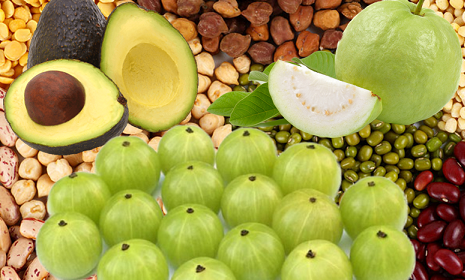A study at Indian Institute of Horticultural Research recommends modifying eating habits and cooking practices to address iron and zinc deficiencies. However, a class of substances called phytates attach themselves to iron and zinc content in food and make them unavailable to the body for its use. But simple interventions can retain iron and zinc, without eliminating phytates, which help in fighting off cancer and age-related changes in the body.
Bengaluru (ISW) – India is one of the leading exporters of cereals. It is the second largest producer of rice and fruits in the world. Overall, the country is self sufficient in food production. Yet iron and zinc deficiencies are widespread even amongst well-nourished children.
A recent study has found that it could be because cereals, tubers and legumes, which are the major constituents of a staple diet, contained a class of substances called phytates in high amounts. Phytates are considered ‘anti-nutrient’ as they attach themselves to the iron and zinc in the food and make them unavailable to the body for its use. This low ‘bioavailability’ is the main cause of deficiency of iron and zinc in the India population.
But, one should not eliminate the phytates from the diet. Phytates help in fighting off cancer and age-related changes in the body.
The researchers at Indian Institute of Horticultural Research, Bengaluru have recommended modifying eating habits and cooking practices. South Indian cooking, for instance, follows a process of fermentation, soaking and germination which reduces the phytate content. Likewise, a simple intervention such as taking a piece of guava or Indian gooseberry (amla) fruit after food or while taking iron tablets would double the availability of iron and zinc in the body.
In addition, they suggest, measures like minimal milling, intake of vitamin C, heating, and enzymatic treatment of grains with phytates enzyme and consuming curds, yogurts and pro-biotic cultures to maintain acid environment in the gut as well as genetic improvement of food crops may enhance bioavailability of iron and zinc. Further, non-vegetarian foods can also make available more iron and zinc to the body.
The study has found the country as a whole requires 8,170 tonnes of iron and 4,412 tonnes of zinc in the food to meet nutritional iron and zinc requirements of the entire population. Availability of iron from plant and animal food sources is estimated at 10,939 tonnes per year and that of zinc at 6,335 tonnes per year. In other words, there is enough supply of iron and zinc through food sources in the country. The intake of the two micronutrients is also adequate.
Agricultural crops such as cereals, pulses, oilseeds and sugar contribute the major share of the requirements, at 82.8% for iron and 78.6% for zinc. This is followed by the animal husbandry sector, including milk and milk products, meat, mutton, beef, pork, chicken and eggs, which account for 3.9% iron and 11.7% zinc. The horticultural sector (including fruits, vegetables and nuts) contributes 12.9% iron and 9.1% zinc to national production. The fisheries sector is at the tail end, providing 0.42% iron and 0.62% zinc.
The research study was published in the recent edition of the journal Current Science.
“There was a need for research efforts to focus on methods to reduce phytate content of Indian foods to enhance bioavailability. This should be at the forefront of nutritional programmes rather than trying to improve the quality or yield of crops,” said Dr. A.N. Ganeshamurthy, who led the research.
“Before a new variety is released for cultivation by a breeder, the Institute/State/National-level variety release committees must take into account the issue of absorption of iron and zinc. Efforts to improve the quality and yield of crops or the ‘biofortification programmes’ will prove to be a failure, if they do not address the issue of bioavailability of nutrients. Further, we must do all we can to ensure a healthy soil and a healthy production environment, with good agricultural practices,” he added.
Iron deficiency, which may or may not result in anaemia, leads to substantial loss in physical productivity in adults. Iron deficiency during pregnancy is associated with maternal mortality, pre-term labour, low birth weight and infant mortality. In children it affects development and increases the likelihood of sickness. Highest prevalence of anaemia is seen in children around 15 years of age, in pregnant women and elderly people. Zinc deficiency, in turn, may cause hair loss, affect the taste and smell, among other things.


